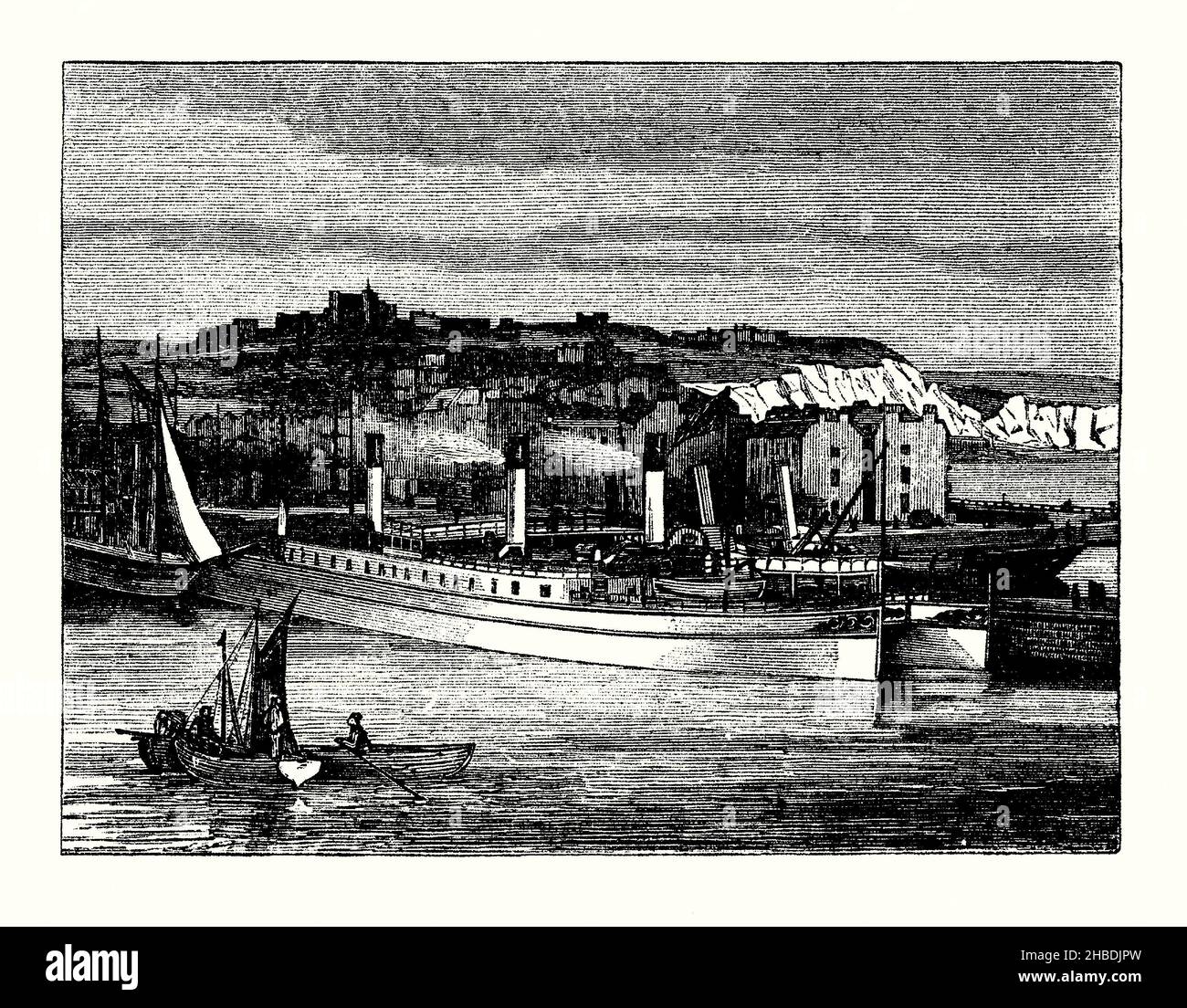An old engraving of the unusual twin-hulled, cross-channel ship PS Castalia, Dover Harbour, Kent, England, UK in the 1870s. It is from a book of the 1890s on discoveries and inventions during the 1800s. Castalia was a paddle steamer built in 1874 by the Thames Ironworks and Shipbuilding Company, Leamouth, London for the English Channel Steamship Company. On arrival at Dover, large crowds came to see the novel ship. Castalia entered into regular service on 5 August 1875. Her lack of speed meant that she was not a financial success.

Image details
Contributor:
M&N / Alamy Stock PhotoImage ID:
2HBDJPWFile size:
28 MB (3.4 MB Compressed download)Releases:
Model - no | Property - noDo I need a release?Dimensions:
3543 x 2765 px | 30 x 23.4 cm | 11.8 x 9.2 inches | 300dpiDate taken:
1875Location:
Dover Harbour, Kent, England, UKMore information:
This image could have imperfections as it’s either historical or reportage.
An old engraving of the unusual twin-hulled, cross-channel ship PS Castalia, Dover Harbour, Kent, England, UK in the 1870s. It is from a book of the 1890s on discoveries and inventions during the 1800s. Castalia was a paddle steamer built in 1874 by the Thames Ironworks and Shipbuilding Company, Leamouth, London for the English Channel Steamship Company. On arrival at Dover, large crowds came to see the novel ship. Castalia entered into regular service on 5 August 1875. Her lack of speed meant that she could not operate in connection with mail trains and she was not a financial success. In 1883 she was sold to the Metropolitan Asylums Board and converted to a hospital ship. She served until 1904 and was scrapped in 1905.